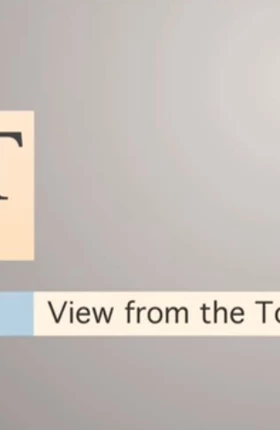We are living in a confusing, polarizing world of dizzying complexity and puzzling contradictions. For every one of us, these are unsettling times. But for leaders, who must plot the path forward for hundreds and thousands of people, these are exceptionally challenging times.
In normal circumstances, leaders struggle to make cool, calculated decisions in a measured, unbiased, unemotional way. They are human, after all. But there is nothing normal or predictable about today’s world. It begs the question: How can business leaders make the right decisions for their company when they face unfamiliar and volatile situations and there are no obvious choices, when they face mounting pressure from multiple stakeholders with different expectations, when the second- or third-order effects of their decisions are unclear, and when the consequence of making the wrong decision could be a dramatically negative impact on their company’s brand, revenue, and valuation?
In this article, we offer an answer to what is a deeply personal challenge for leaders today. As we see it, the heart of the problem is the way the fast and radically changing “real” world clashes with our own mental model of a “familiar” world that has developed over many years. This clash can potentially cause havoc—“cognitive dissonance” is how the CEO of one global industrial company described it to us. In practical terms, it can disrupt the way leaders make sound, long-term, strategic plans. Umang Vohra, the chief executive of Cipla, a global generic-drugs company, put it well when he told us: “The comfort of predictability [for making decisions] is gone.” As we will explain, there is a solution to this problem. But first, it is necessary to understand the two critical factors that have made this a burning challenge for the current generation of leaders: one, the troubling, contradictory features of the real world today; and two, the way we, as human beings, develop our mental model of the world around us.
There is nothing normal or predictable about today’s world.
Today’s Real-World Dilemmas: The Five New Fault Lines Fragmenting the Old World Order
Not so long ago, the world was on a steady course to become ever more interconnected, ever more interdependent, ever more integrated. Globalization was celebrated as a good thing, improving the lives of billions of people. The spread of liberal democracy, good governance, and international institutions—all operating under a kind of Pax Americana—provided a stable environment for fostering creativity, innovation, and entrepreneurship. The remarkable advances in digital technology offered the prospect of greater connectivity, greater productivity, and greater economic development.
Now, all of a sudden, these articles of faith, which have shaped our view of the world over the past 30 years, are being overturned. The rug of certainty is being wrenched from beneath our feet. So, what is driving this unpredictability? What is giving rise to the seemingly unbridgeable choices—dilemmas—facing business leaders today? Here are five of the deep and widening fault lines fragmenting the old world order (clearly, this list is not complete and is growing with time). In no particular order, they relate to globalization, climate change, geopolitics, digital technology, and tribalism.
Dilemma #1: Globalization
It used to be assumed that the world is much better off with increasing globalization. But, for too many people, this is not the case anymore. In some respects, the word “globalization” has become a euphemism for wage, tax, regulatory, and environmental standards arbitrage. Nowadays, when business leaders relocate their factories, find new suppliers, or outsource part of their operations in order to offer consumers better and less expensive products and services, they are often cast as mercenaries greedily pursuing profits and blithely disregarding the negative impact on local communities. So how can they come to a balanced, fair-minded decision on the best way forward?
Dilemma #2: Climate Change
It is widely acknowledged that the looming environmental disaster caused by climate change must be tackled before it is too late. Business leaders accept that it is not only the responsibility of governments to address this existential crisis—it is their responsibility too. But how, for example, should they respond to calls to meet zero-carbon emission targets in a fair and transparent way that does not put their profits at risk and their company at a competitive disadvantage?
Dilemma #3: Geopolitics
The dismantling of the “unipolar” world order, the rise of economic nationalism (as more countries pursue protectionist policies that favor their own companies), and the mounting geopolitical competition between the world’s two biggest economies—the US and China—present business leaders with a dauntingly difficult decision to make. It is one that encompasses not only business and economic factors but also factors relating to wider stakeholder issues such as social values and liberal democracy. Already, there are fears that companies will be forced to choose sides—or else. But how should business leaders negotiate this strategic conundrum without suffering some kind of retaliation or retribution that hurts their shareholders and stakeholders? Should they, for example, undertake a hugely costly relocation of a plant from a low-cost country hit with import tariffs as a result of the US-China trade war or wait patiently for the world to return to some kind of normality?
Dilemma #4: Digital Technology
The rise of digital technologies—for instance, artificial intelligence, machine learning, robotics, big data and advanced analytics, and the Internet of Things—will change every product and service and impact every workplace and every job. The best companies will become bionic, merging the finest attributes of humans and machines. But the transition from an industrial world to the digital world will not be painless. How can business leaders maximize the palpable benefits of these technologies while not only addressing the legitimate concerns of governments and civil society relating to data ownership, transparency, and privacy but also minimizing the potentially negative impact on their own employees? As the HR director of a global industrial company told us, his company faces a strategic dilemma: Should it slow down the program of digitization—even though this is regarded as being critical for its future competitiveness—because the resulting job losses and what he called the “hollowing out of the middle” are negatively impacting employees’ morale and the corporate culture?
Dilemma #5: Tribalism
It is an ancient feature of the human condition that we gravitate toward our own kind, our own “tribe.” In premodern society, this evolved as a survival strategy, with individuals realizing they were safer when they were with others than when they were alone. But in modern society, this tribalism can manifest itself in a negative way—as a suspicion, even a fear, of people from different ethnic groups, different religions, different genders, different generations. At a time when the world has been getting smaller—thanks to the integrative forces of globalization and digital technology—this wariness of the “outsider” is a troubling throwback to a primeval era. So how can business leaders build global companies and foster diverse communities when they must contend with a growing tribalism among their employees, among their customers and suppliers, and among the people in the different countries where they do business?
It goes without saying that business leaders have long had to deal with difficult dilemmas. But today, their task is harder because they must also answer to the many different people who can legitimately claim to have a stake in the company. In the past, CEOs had to worry only about delivering profits for the company’s principal stakeholder—the shareholder. As the economist Milton Friedman put it: “There is one and only one social responsibility of business—to use its resources and engage in activities designed to increase its
Of course, it is the job of leaders to make tough choices, pick winners, and take responsibility for the consequences. That’s what they are paid to do. But the evidence is that they are finding this harder to do. In a study of the longevity of more than 30,000 public firms over a 50-year timeframe, our colleagues at the BCG Henderson Institute and researchers from Princeton University found that “businesses are disappearing faster than ever
To stop this corporate malaise, many CEOs embark on big, ambitious transformation programs to deal with a changing world. But, in doing so, they overlook one glaringly obvious fact: they, themselves, almost certainly need to transform too if they are to make the right decisions. The reason for this lies in the way we, as human beings, think—the way our brain functions, processes information, and understands the world. Complex though it is, our brain is simply not built to deal with the scale, speed, and sheer complexity of the contradictory world that has emerged over the past years.
Our Mental Models: How We Process Information—and Why It Matters Now
The world has always been complex. But as a result of some remarkable advances in the field of neuroscience, it is now possible to see that the way our brain processes this complexity in order to make decisions can be suboptimal, counterproductive, or even plain wrong—especially at a time when the contradictory fault lines are deepening and widening.
The first thing to understand is that we have all developed a mental model of the world around us. This view of the world—formed by our own unique mix of education and training, life experience, and the societal norms of our national and local communities—provides the context for our decision making.
The second thing to understand is that when we come to make a decision, we are heavily constrained by the physical way our brain processes, or computes, information. Since it requires an enormous amount of energy to function, it looks for ways to be as efficient as possible. Specifically, it looks for shortcuts to minimize “heat generation,” such as simplifying and, as we say, jumping to conclusions. Also, it tends to compute different types of information in distinct cerebral regions. Analytical issues are tackled by the “left brain” while creative, social, and artistic issues are tackled by the “right brain.” Simply put, if one side is better developed than the other, it tends to dominate, often with problematic consequences when processing complex and conflicting information that requires both sides—for example, when a business decision has to take account of societal and cultural factors.
When we fail to align the data from the real world with our mental model, there is a clash: a cognitive dissonance.
The simplification can manifest itself in different ways. Typically, we try to force-fit what we’re seeing into our mental model. To do this, we use our pattern-recognition capability, which draws on a collection of cognitive biases designed to help us see the world as we want to see it. One of these is confirmation bias, where we look for data that supports our preconceptions. This can happen, for example, when CEOs commission some work to test the feasibility of a new product idea and the researchers look for information that gives the CEOs what they want. Another is disconfirmation bias, where we ignore data that doesn’t match our preconceptions.
When we fail to align the data from the real world with our mental model, there is a clash: a cognitive dissonance. Sometimes, we may rush to judgment, taking hurried, poorly considered decisions. Conversely, we may be paralyzed, freezing like a rabbit in the headlights, unable to make any kind of decision at all, good or bad.
In light of these insights, we spoke to dozens of senior business executives to understand how they process often conflicting data, how they resolve seemingly intractable dilemmas, and how they cope with the demands of a contradictory world.
How do they manage to square the circle?
From these conversations, we have developed a practical two-pronged approach for doing just that. The first part focuses on the personal journey of transformation that leaders should undertake, and we have devised a series of individual interventions designed to help them do this. The second complementary part focuses on the corporate journey of transformation, and we propose a series of institutional interventions that leaders should introduce across their company.
Squaring the Circle: A New Agenda for Business Leaders
As the world becomes more volatile, more unpredictable, and more unmanageable, it is essential that leaders do not go on the defensive, retreat behind closed doors, and underplay the problems. On the contrary, they should go on the offensive by building their own and their company’s capabilities for recognizing and responding to the challenges, making tradeoffs, and finding solutions.
To do this, we recommend a three-step action agenda for leaders. First, they should accept the world as it really is with all its myriad contradictions—and not as they would like it to be. Second, they should readily adapt to the world as it changes. Third, they should activate their personal and corporate “navigation” tools for recentering themselves as individuals and their company in the face of all the conflicting demands on them.
1. Accept the World as It Really Is—Not as You Would Like It to Be
We are programmed to see the world as we would like it to be. So when it isn’t, when we are faced with complex, unknown (in our past experience), and contradictory information and issues, we let our cognitive biases take over, we simplify and stereotype, we let our analytical left brain quickly jump in and try to decode and explain. In some cases, we become overwhelmed by the situation, and this can lead to muddled thinking and poor decision making.
To prevent this from happening, it is important that leaders accept the world as it is. And by this, we mean that leaders must understand it, come to terms with it. As one neuroscientist told us, they should view the world as if they were “an observer in outer space.” Counterintuitively, the failure to do so often afflicts the most successful leaders. This is because success can lead to complacency and overconfidence: “I have been successful in the past, so why shouldn’t I continue being so?” As Claudia Sender Ramirez, former CEO of LATAM Airlines in Brazil, told us: “In my experience, many successful people who tend to oversimplify end up accepting a reality that they don’t deeply understand.” In other words, when the reality changes or the fault lines deepen, they struggle to deal with it.
Having said all this, it is important to note that by saying leaders should accept the world as it is, we are not saying that they should then do absolutely nothing about it. On the contrary, the point is this: once leaders accept and truly understand the world as it really is, they will be in a much better position to find practical ways to disrupt and transform it.
1(a). Individual Intervention: Take Time to Reflect, Revise, and Expand Your Frame of Reference. Leaders who have been raised in noisy, heterogeneous, fast-changing environments seem well suited to the world as it is today. Not for nothing are some of the world’s biggest companies run by people born in developing countries such as India—which has 1.3 billion people who speak more than 20 official languages and practice all kinds of religion, from Hinduism and Islam to Christianity, Sikhism, and Buddhism. For example, Microsoft and Alphabet are run by Indian-born executives: Satya Nadella and Sudar Pichai, respectively.
Likewise, executives who have been posted to offices around the world, and see for themselves how others do things, have prospered. A senior European executive of a global consumer goods company with a policy of sending high-potential managers on tours of duty in foreign markets told us how the experience had taught him to reframe the world as he found it and never to take anything for granted. “Wherever I was sent,” he explained, “I had to learn how to very quickly feel at ‘home.’”
But it is not necessary to be born in or posted to such multidimensional environments to be a successful leader. It is necessary, however, to find ways to suppress our natural inclination to impose an artificial order shaped by our own mental models—our own preconceptions, particular biases, and personal preferences.
One way is to step back, take time to reflect, engage in physical activity, and in some meaningful way disengage from the daily hubbub. For example, Jack Dorsey, CEO of Twitter, has a variety of strategies to clear his cluttered mind and become, as he puts it, “performant.” This includes meditating twice a day (once in the morning, once at night), walking five miles to work twice a week, and writing about his day or journaling every
Another way for leaders to stop their brain from becoming overwhelmed by the unfamiliar is to expand their frame of reference—in effect, broaden the portfolio of patterns their brain uses to recognize new stimuli. Neuroscientists now appreciate the extraordinary “plasticity” of the brain, and this knowledge can be turned to leaders’ advantage: they can rewire their brain by traveling far and wide, encountering different worlds, different ways of life and culture, different ways of doing things. For example, if you operate in the private sector, find out how the public sector works. If you work in the US or Europe, visit businesses in Africa and Asia. If you run a big business, make a point of meeting the founder-entrepreneurs leading some new, small, innovative companies.
One CEO in India told us that, in today’s fast-changing world of technology, she makes it a point of meeting at least one “interesting” startup every quarter. “I get to see the world as viewed through a different pair of eyes, and always learn something new,” she said, “and it has taught me not to take my competitors for granted and always question the status quo.”
But the traveling should not only be physical. It should also be intellectual. If you allocate an hour a day—five days a week—to reading, reflecting, and learning something new, you will see the benefits of what has been called “compound learning.” Warren Buffett, the billionaire investor, spends 80% of his time reading and thinking because, as he puts it, knowledge “builds up, like compound
The breadth of vision, or perspective, is something that headhunting firms are increasingly seeking in future leaders. Filiep Deforche, a senior leader at Russell Reynolds Associates, told us that they are on the lookout for potential leaders with “a large span,” explaining that “aeroplanes need two wings to fly, and if they only have one—they crash.”
1(b). Institutional Intervention: Develop Diverse Leadership Teams. Just as individual leaders can get a better understanding of the world as it really is by broadening their own portfolio of patterns, so institutions can do this by developing diverse leadership teams comprising individuals who each bring their own differing sets of pattern-recognition capabilities.
Until recently, it was not uncommon to see major companies led by teams of people from remarkably similar backgrounds. This was the case not only in the US and Europe but also in India, Japan, and China, among other places. Things are starting to change, albeit slowly. If companies are to see the world as it really is, they will need to accelerate the process of developing diverse leadership teams that properly reflect the full range of ethnic, gender, demographic, and neurological interests among their stakeholders. It is not enough, however, simply to recruit a diversity of people. It is also essential that these diverse people get exposed to a diversity of experiences on a regular basis. Like the CEOs, they too must embark on their own personal journey of transformation—traveling, taking up posts in countries far from home, and reading widely.
By developing a diverse team, companies can build the best defense against the clear and present danger of group-think and unlock new solutions to troubling problems. The CEO of a leading European industrial company told us how the creation of a diverse team helped him respond to a sudden regulatory change in Russia. The top executive team at the company’s headquarters had no clue how to tackle the problem caused by the new regulations. So, to find a solution, he put together an international team of leaders who had dealt with similar changes in their own countries and who looked at the “facts” in a very different way than the executives at the company’s HQ.
2. Adapt to the World as It Changes
If leaders accept the world as it really is, then they must also, by implication, adapt to the world as it turns—and that means being ready and willing to change constantly because the world doesn’t stay the same.
Of course, such an injunction is nothing new. In the 1860s, Charles Darwin first talked about “the survival of the fittest.” Over the years, his words have been misconstrued as meaning the survival of the fastest, the biggest, the tallest, the cleverest. Actually, he used the word “fit” not as a synonym of some athletic or other prowess but rather as a description of something that is best adapted to its specific environment. All living species have learned to survive by constantly “refitting” or adapting to the changing world around them. So, what practical steps can leaders and their companies take to do this too?
2(a). Individual Intervention: Be Open-Minded and Outward-Looking. One way leaders can become more adaptive is to be more proactively open-minded and outward-looking, more willing to listen to arguments that challenge their own way of thinking—their own mental model. All too often, people talk, or even shout, across each other. Today, this can be seen in the way so much public discourse is conducted, with one group of leading thinkers—including the cognitive psychologist Steven Pinker, the business writer Malcolm Gladwell, and the novelists Margaret Atwood and Salman Rushdie—recently venting their frustration in Harper’s Magazine, regretting the growing “intolerance of opposing views” and the “vogue for public shaming and
But what is happening in public is also happening in private, around the boardroom table. There is often no willingness to hear the other point of view, openly engage in meaningful debate, and accept the many contradictions that different parts of the same company face in different parts of the world.
If leaders are to counteract this suffocating narrow-mindedness, they must, as Baudouin Prot, former chairman and CEO of BNP Paribas, told us, let the “fresh oxygen of different views and ideas” flow through the boardroom. They should ask questions, not give answers. They should build upon ideas, not find ways to knock them down at an early stage.
For one thing is certain: without this openness, there can be no change or adaptation, and without change or adaptation, there can be no progress, no enduring success. As a newly installed CEO confided in us: “I know that I am not right—and cannot be right—all the time. But no one in my leadership team is willing to offer me a counter-point or challenge my ideas—however much I encourage them to do so. I now realize that we have all grown up in a culture where the CEO is the unquestioned boss. To address this, I have come to the conclusion that I will need to bring someone very different from outside into my leadership team.”
Another, and somewhat unconventional, building block for becoming more adaptive is to develop a richer vocabulary for understanding the world in all its kaleidoscopic variety. One way to do this is to study the liberal arts, which were first proposed by Aristotle as an essential part of a rounded education. Too often, they are haughtily dismissed as “soft” subjects, and it is striking how few top executives study the liberal arts. In the main, business leaders prioritize people with left-brain scientific and technological skills and MBA degree holders who learn problem solving through the case study approach. But by studying the liberal arts, leaders can strengthen their right-brain capabilities and thereby improve their ability to make sense of a complex, messy, irrational world—and make effective decisions.
One of the great advocates of the liberal arts was the late Steve Jobs, who was among the few business leaders of science and technology companies willing to speak up for the humanities. As he observed: “It is in Apple’s DNA that technology alone is not enough—it’s technology married with liberal arts, married with the humanities, that yields us the results that make our heart
2(b). Institutional Intervention: Promote Openness with Decentralized, Distributed Decision Making. It is clear that individual leaders should be receptive to alternative views and alternative ways of doing things. As Ms. Ramirez said to us, “It is a good idea to try to reinvent yourself every 10 years or so.” Equally, institutions should be similarly open—and this has never been more important than today. Indeed, such is the pace of change taking place in different ways in different parts of the world that it is no longer reasonable to think companies can adapt to every local stimulus by operating a top-down, command-and-control approach to decision making. Instead, companies should harness the energy of diverse teams stationed closer to the action. As Bob Black, former group president of Kimberly-Clark Corporation, phrased it, they should “turn the pyramid upside down.”
Increasingly, some major companies are promoting an institutional openness by empowering local and frontline leaders, giving them the authority to make rapid, on-the-spot decisions so that they can respond to new challenges and capitalize on new innovations that so often emerge on the periphery rather than at the center. The CEO of one leading Latin American corporation told us how he is trying to “invert” the normal rules and put the business in the “driver’s seat.” As he explained, the company doesn’t have an official corporate headquarters. Instead, it has a “thin layer” of leaders at the top, and their task is to serve “as an enabler,” offering support for people operating in a series of what he called “centers of gravity.”
3. Activate Your Personal and Corporate Navigational Tools for Recentering Yourself and Your Company
In addition to accepting the world as it really is, and adapting as it changes, leaders and their companies must develop a common set of values and goals that will help them steer a steady course through these turbulent, conflicting, and contradictory times. Yes, individuals and institutions must make compromises—that’s how they adapt—but they must nevertheless remain true to themselves. That is the basis of trust, and trust is a vital commodity in business. It is hard to win and all too easy to lose. Nobody wants to do business with people and organizations that blow one way and then the other with each new wind of change. And in the current environment, it is clear that the winds of change are blowing as hard as they ever have—and from every direction.
3(a). Individual Intervention: Switch on Your Personal Compass. As individuals, leaders should switch on what we call their “personal compass.” Many people talk of “purpose,” but we think this word is best reserved to describe a corporate mission that goes beyond the narrow pursuit of profit. We use the word “compass” to describe the set of principles or codes that are core to individual leaders and guide them in their personal and professional life.
As a leader, you must ask yourself three fundamental questions: Where am I going? Why am I going there? How am I going to get there?
Your compass is your personal tool—unique to you—that helps you answer the third question: how you navigate your way to your destination. Of course, you may need to alter the route you take as you encounter new challenges, new obstacles, new problems. This is all part of adapting to the world as it really is. But what you don’t change is how you travel: for instance, how you treat the people around you, how you negotiate with customers and suppliers, how you address their strengths and weaknesses, and how you openly acknowledge your own strengths and weaknesses too.
As Cipla’s Mr. Vohra explained to us: “One of the main reasons why I decided to join the company was the answer I received to my question to the promoters (and principal shareholders): ‘Who, in your opinion, are Cipla’s principal “shareholders” and what do they expect from the CEO?’ Their answer that ‘we were set up to serve patients and save lives’ was aligned with my deeply held views, and has been my ‘line in the ground,’ my personal compass which guides my decisions whenever I am faced with conflicting pressures.”
3(b). Institutional Intervention: Center Everyone Around an Energizing Common Purpose. In a world of contradictions, diametrically opposed forces, stakeholders pulling in different directions, and diverging expectations between Gen-Zers, Millennials, and Baby Boomers, companies need a way to center everyone around an energizing common purpose. A few years ago, companies tended to talk about their “mission statement”: a pithy sentence or two that expressed their raison d’être. This has since evolved into what is now called the firm’s “purpose”—a powerful “magnet” that pulls individuals and teams together around common goals and gives them the motivational energy to achieve them.
Many leadership teams start to define their purpose by asking themselves the existential question: Why do we, as a company, exist? There are clear advantages to doing so. According to research by BrightHouse, a BCG company, “brands with a high sense of purpose have experienced a brand valuation increase of 175% over the past 12 years, compared to the median growth rate of
In our view, it is important to see purpose as the institution’s corollary of the personal compass. The two are connected. They are two sides of the same coin. If there is a mismatch between the leader’s personal compass and the company’s purpose, then there may be a problem. Equally, leaders, guided by their own personal compass, can offer inspiration to the rest of the organization. “The leader has to define what the company stands for,” said Roland Busch, incoming CEO of Siemens, during an interview for a newly published BCG book titled Beyond Great: Nine Strategies for Thriving in an Era of Social Tension, Economic Nationalism, and Technological Revolution (Public Affairs, 2020). They have “to give something meaningful to the company.”
Echoing these sentiments, Microsoft’s Satya Nadella said: “The most useful thing I have done is to anchor us on the sense of purpose and mission and identity. There is a reason we
This Time It’s Personal: Why Leaders Must Transform Themselves, Not Just Their Company
It has become an axiom of business that change is the only constant. In today’s world, the word “transformation” might be better than “change.” As Mr. Prot put it to us: “We can only underestimate the challenges we face these days.” But too often, business leaders launch bold corporate transformation programs by issuing directives from the executive suite, demanding that employees alter their working habits and forgetting that real, enduring change starts at the top—with the leaders. This is why it is time for business leaders to take a long, hard look in the mirror. If their corporate transformation is to succeed, they need to transform as much as, if not more than, their employees.
If a corporate transformation is to succeed, the leaders need to transform as much as, if not more than, their employees.
And when we say “business leaders,” we mean board members as well as C-suite executives because they are often the laggards, holding onto an outmoded way of doing things. “It is very difficult for CEOs to reinvent themselves continuously,” one senior nonexecutive told us. “It is better for boards to find the right CEO for the right context.” In other words, if you’re in a growth phase, hire a CEO with an entrepreneurial mindset, and if you’re in crisis, choose a CEO with conservative cost-cutting credentials.
But, in our view, this is an outdated perspective. Such is the pace of change that companies simply cannot afford to chop and change executives with each new economic phase. It is just not practical. Not only that, but very often, global companies may be expanding in one particular business or part of the world while at the same time shrinking in another. In other words, they need CEOs that can deliver bottom-line savings and generate top-line growth at the same time. Indeed, there is evidence that the best-performing CEOs are doing precisely this. Recent research by the BCG Henderson Institute found that while most companies perform poorly during a downturn, some 14% manage to defy the odds by increasing sales growth and expanding profit
So what’s the secret? How can business leaders reinvent themselves and their company continuously? How can they better manage the tradeoffs when faced with two equally unfavorable alternatives? How can CEOs lead effectively in a world of contradictions? They need to do three things: accept the world as it really is and not as they would like it to be, adapt to the world as it changes, and activate their personal and corporate navigational tools for recentering and guiding themselves and their company through the choppy waters of conflicting and contradictory demands.
Accept, adapt, activate. It sounds beguilingly easy. But be in no doubt: it is hard to do. It means understanding and then reconfiguring, reframing, and expanding how you think. It means coming to terms with your weaknesses and fallibilities. Bluntly put, this can be uncomfortable, disconcerting, humbling. Do it right, however, and it can be rewarding for you and your company. Do it right, and you can hope to square the circle.






